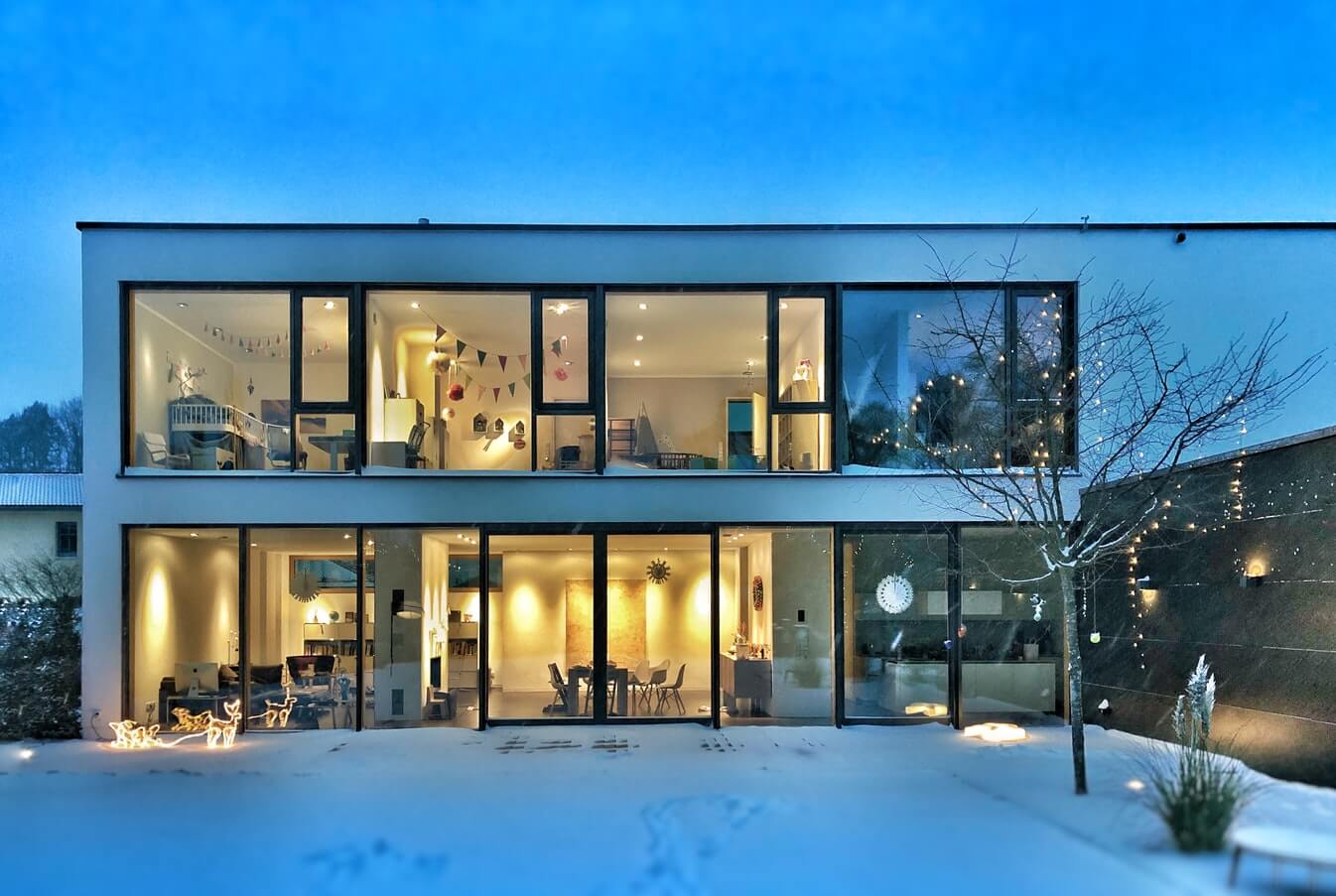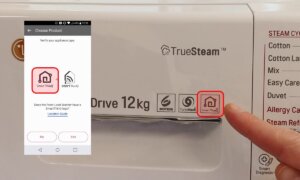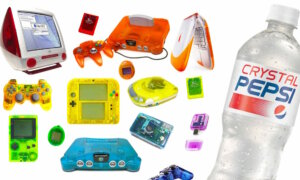About twenty years ago, creating a smart home with all the devices interconnected would require some know-how, a ton of wires, and electronic-boards to connect everything. Today, you can buy off-the-shelf products and, thanks to some connectivity standards, like wireless, NFC, and Bluetooth, integrate them all in your home ecosystem in no time.
It all starts from the front door, where you can buy a smart-doorbell, a smart-locking device, and even motion sensors, to the smart-security device in your home, that shuts down alarms the second it picks up the signal from your NFC tag. And that’s only at the door.
The Smart Home Market Is Is Surprisingly Big
In a few short years, we managed to surpass manufacturing and cost problems. Products that cost a few hundreds of dollars in the past are now in the double digits price range. If the user wants the extra security and peace of mind that a smart home ecosystem provides, it can also dip in the used products market. The number of products that are available in the smart home market is astonishing.
A smart home is a thing you miss the moment you lose it. There is a certain elegance to having every aspect of your home easy to control; to be able to lock down your house or set the ambiance is a power trip. You are the ruler, and once that convenience goes, you will start missing it.
You can go DIY or choose from a brand. Go knocking at an OEM’s door or go custom build.
You can even go the extra mile and choose custom. It may be cheaper in some cases, depending on the kind of smart devices you want. There are some guides out there that show you how to build a smart doorbell or a smart lock.
You will need some know-how, but with the right determination, you can knock out a project like this in a few days.
The Smart Home “Off The Shelf” Aspect Of Things
Depending on your budget, you can go all out or just cover the bare necessities. You can get some motion sensors and cameras for the home, and a smart doorbell or a smart lock. Maybe go crazy and get a smart bulb with RGB and a speaker in it. And if you are willing to spend some more money, maybe get a smart vacuum cleaner.
The range of smart home products is growing every day. There are smart-desks and chairs, smart freezers and faucets. We’ve got smart washing machines, smart showers, smart toilets, and even a smart bathroom mirror that never fogs up. And everything is connected and working in tandem. Even our cars are now smart.
Off-the-shelf starter kits offer a smart lock, a security camera, maybe a smart doorbell, motion sensors for your windows and doors, some smart lighting solutions, and a smart wall plug. You can also add a smart thermostat, a smart tv, smart livingroom chair, and a smart garage door.
The DIY Aspect Of Things
On the other hand, the smart home DIY community is extremely active and helpful. Using some Google-Fu and some Youtube-Jitsu is the way to go here. The user can find out what kind of materials he needs for a project like this, calculate the costs and estimate the time he needs to build and integrate. Sure, you can’t turn your old vacuum cleaner into a smart one. But you sure can jerry-rig some sensors and a camera to a board.
It sounds simple but in reality, there is some trial and error involved, and you will break some parts along the way. The good news is that the parts you need are cheap and widely available. The bad news is that you will have to wait until you get all of them.
With the meteoric rise of micro-boards like the Raspberry or the Arduino, building a small device like a smart lock is easy these days. The problem is when you want to integrate this device into your ecosystem. In fact, that is the problem with most smart home kits.
The Monetary Aspect Of It
Budgets may be different from household to household. Truth be told, you can go for a mid-end solution like the one Samsung offers in its Home Monitoring Kit, for less than $150, and get a really good deal out of it. Just buying into Samsungs ecosystem of smart things may prove cost-effective in the long run, and get you access to more smart devices.
Usually, it all starts with a smart home hub, that you have to buy stand-alone or have it around the house, in the shape of a voice assistant. You will need some sensors, a security camera, a doorbell, lights, wall plugs, light switches, and a wi-fi extender.
The Smart Hub
Depending on what kind of Smart Hub system you want to implement, the price may be from $50 to $500. You can go for the Samsung SmartThings Hub $70 at this time on Amazon, an Echo Dot, that it’s even cheaper $39, use your Apple TV, or go for the more powerful offerings like the Samsung Connect Home that goes for $220.
Spending is a problem, and you need to pick and chose what you need the most. But it’s imperative to start from a hub. Here, you have some flexibility, seeing that if you have a voice assistant around the house, you can use that as your hub, and start cheaply from there.
The Sensors
To that, you need to add multipurpose sensors that are usually inexpensive running below the $50 mark. These sensors will keep your house safe and monitor for any potential intrusions. A good trick is to get them in packs of two or four, this way keeping down the costs and maximizing the space you can keep secure.
Home Monitoring Kit
After you picked your smart home hub, go on Amazon and check the Home Monitoring Kit section and pick a pack that suits your budget. Some of them offer a few sensors and a 1080p camera for under $85, with good quality. Other offerings, like the Arlo Pro, can have prices between five to six hundred dollars. And the Arlo Pro 3 offers home security cameras with night vision and a slew of other video features.
There are also other competitors out there that offer a crisp 1080p video, for about half that price. Panasonic HomeHawk is a good example or the Arlo Smart Home Security Kit. When you pick the home security, try to go for a well known and established manufacturer. Google, Samsung, Panasonic, Tp-Link, even Xiaomi, offer a cheap solution for a smart home with a good asking price of under $100.
The Smart Light
After your sensors and cameras are selected, you will need smart lights in the house. Here you can go wild and buy-in because, with the growing market, smart lights are cheap. You can even buy an LED strip for $20, connected to a $10 PCB, and have smart light in the house. And if you get smart lights, get smart dimmer switches for your rooms too. TP-Link offers one for $20 to $30, and it’s integrated with all the voice assistants on the market. For a two-bedroom apartment, you will walk away with maybe $60, buying some reliable mid-range products, that will last you a while.
Smart Plugs and Smart Wall Sockets
Smart plugs and sockets are also inexpensive. A good one can go for $10 and a really good one, with a Wi-Fi Extender, can vary between $20 and $60.
Big market with affordable prices for everyone
Try to see these smart home gadgets as a bare-bones list of things you need to turn your house into a smart one. If you go for mid-range, proven to be good products, easy to integrate smart home add-ons, your budget for just a smart hub, monitoring kit, light, and plugs, should not pass over $300 for a viable solution.
As we said above, the market is flexible and diverse. You can go to extremes, or just spend a maximum of $500 for a list of bare basics, and from there you can keep adding on, depending on your smart home needs.
The Practical Side Of It
If you go off-the-shelf, or DIY, the reality of the situation is that most manufacturers create ecosystems that usually don’t interact with each other. You can buy a smart light from one company and be limited to one-app interactions. That is true of most smart home gadgets out there. Most of them limit the use of the device to the company-made app, and maybe throw in some voice assistant integration to make the growing pains more tolerable.
The user, most of the time, is limited to the ecosystem that the company pre-made for them. And let’s face it, some of them are buggy as hell and don’t offer a full range of features that the user needs. Setting up my smart-wallplug using the provided app to shut down at a certain hour should not be equal to fixing the time on a VCR.
Having all the smart home devices connected to one hub is usually the way to go. This comfort and control over your home in one touch may prove more addictive than you imagine. The power to fire up an app that closes all the doors and lights in the home puts up the security system and sets up the morning coffee is the stuff dreams are made off. So check the ecosystems your device works with and the kind of connectivity it offers before you buy.
Also, check if and what kind of Voice Assistant you can use with your smart device and the compatibility range it has. Does it work with Apple and Android devices, or just some proprietary platform? Look at what kind of voice commands it takes and if you can change them. Some may overlap, and you don’t want your vacuum and your lights to have the same trigger.
Having a smart home means a lot of data has to travel through your wireless connection. When upgrading from a regular to a smart home, you must consider a better wi-fi router. That’s another hidden cost.
If you install smart lightbulbs in all your home, a couple of surveillance cameras, and a few motion sensors, that’s enough to overwhelm a cheap router designed to handle maybe 5 connections at the time. The lack of a powerful wi-fi router may be the cause of all your smart gadgets not working correctly. And the cost will run you in the double digits for a decent router.
Some Things To Consider Before You Go Smart
The size of your home and your lifestyle are the things you have to consider before planing a smart home. How do you lead your life? What kind of protection you need, and when do you need it? Check if your home system has a failsafe in case of a power outage. Think logically before you make any purchase.
Some of the devices that are in your home are ready to be connected to your phone already. A Bluetooth connection is a good indicator of that. Connecting and controlling them from one portal may improve the quality of your life. But it comes at a cost.
There are some hidden costs associated with a smart home. Getting out of bed to turn off the lights, vacuum cleaning, or setting up the morning coffee are no longer things on your to-do list. Smart home appliances will make you lazy and even trick you into buying more stuff down the way.
You just spent maybe $500 on a starter kit, and you find out your wi-fi router is not compatible, and your brand new smart-espresso machine doesn’t work with your iPhone and the rest of the smart house gadgets. What do you do? Return them all after such a big commitment, or upgrade your router and get a new smart espresso machine that integrates with Siri? Food for thought – comment below!
Follow TechTheLead on Google News to get the news first.



















